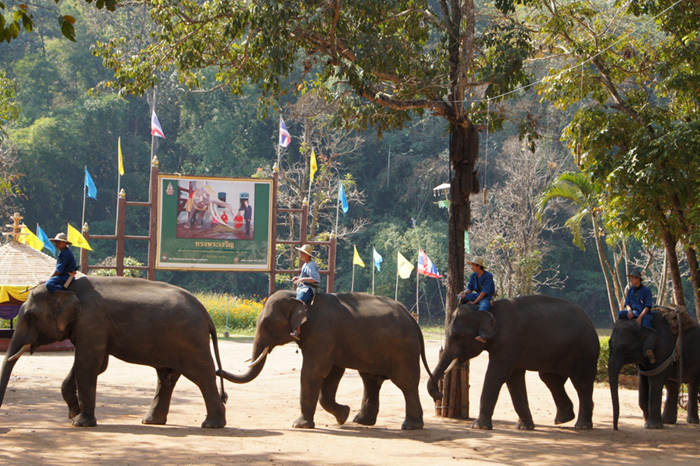The Elephant Plays a Xylophone
When Thailand’s indiscriminate commercial logging of teak forests was halted in 1989, thousands were left without work, including teams of elephants trained to haul the heavy timber. Many of these animals were massacred for their ivory tusks or simply abandoned (another tragedy, since a trained elephant is much like a pet lacking skills to survive in the wild). So Thailand’s elephant population, which has numbered 100,000 in the last century, is now closer to 4,000, of which about 2,400 are domesticated.
“Although revered by many Asian cultures, the Asian elephant is being pushed to extinction,” reports the World Wildlife Federation.
Now the 300-acre, government-run Thai Elephant Conservation Center gives elephants a place to raise thousands of dollars per year on their own behalf. An elephant hospital cares for the species, including those that step on land mines near the Thai-Myanmar border.
Tourists show up to watch some of the facility’s 50 pachyderms bathe, with assistance from their mahouts (caretakers), who ride the animals bareback. Travelers also pay to immerse themselves in the experience, by staying a few days to learn how to care for one of the animals.
But the trained animals remain continued captives. During 45-minute, open-air shows, elephants balance on three legs, play xylophones, paint bouquets of flowers and demonstrate how they used to move heavy logs. Their paintings are sold in the gift shop and online. Their dung (averaging 110 pounds per animal daily) is collected, washed, bleached, flattened, dried and sold as paper sheets, bookmarks, notepads and picture frames.
“The longer I stay here, the sadder I get,” admits Supat Sutti, the operation’s coordinator for 10 years. “The elephant is the symbol of wilderness in this country.”
CONTACTS: Thai Elephant Conservation Center.


